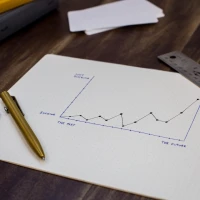In the world of mathematics, understanding how to solve and graph inequalities is a crucial skill that unlocks a deeper insight into algebraic concepts and real-world application scenarios. Graphing, in particular, provides a visual comprehension that is influential in learning and teaching algebra. In this comprehensive guide, we will explore the intricacies of solving and graphing inequalities, ensuring that you grasp the fundamental principles and acquire the confidence to tackle complex problems with ease.
Understanding Inequalities and Their Solutions
Inequalities are mathematical expressions that indicate one quantity is greater than, less than, greater than or equal to, or less than or equal to another quantity. They help us define the range of possible solutions for a given scenario, rather than a single value. To solve an inequality means to find all possible values that make the inequality true.
Types of Inequalities
- Linear Inequalities: In the form ax + b < c, where a, b, and c are real numbers and ‘x’ is the variable.
- Quadratic Inequalities: Involves a squared term (e.g., ax² + bx + c > 0).
- Rational Inequalities: Contains a fraction with a variable in the numerator and/or denominator.
- Absolute Value Inequalities: Consists of absolute values which measure the distance from zero (e.g., |x - a| ≤ b).
Strategies for Solving Inequalities
Before delving into graphing, it’s essential to know how to solve inequalities. Each type of inequality requires a different approach. However, there are foundational strategies that apply across the board.
Isolating the Variable
To solve an inequality is to isolate the variable on one side. This often involves: lyrics to beautiful disaster by 311
-
Adding or Subtracting: To remove constants from one side of the inequality.
-
Multiplication or Division: When multiplying or dividing both sides of the inequality by a negative number, remember to reverse the inequality sign.
Checking Critical Points
Certain inequalities, like quadratic or rational, may require finding critical points where the inequality changes from true to false or vice versa.
Interval Testing
Once critical points are determined, test intervals to see which ranges satisfy the inequality.
The Fundamentals of Graphing Inequalities
When graphing inequalities, you are representing the solution set on a number line or coordinate plane. It provides a powerful visual that conveys the range of possibilities.
Graphing on a Number Line
Used for simple, one-variable inequalities, following key steps:
- Determine the critical points.
- Choose whether to use an open dot (exclusion) or closed dot (inclusion).
- Shade the appropriate side that represents the solution set.
Graphing in the Coordinate Plane
For two-variable inequalities, graphing on the coordinate plane is necessary:
- Convert the inequality into equation form and graph the line.
- Determine which side of the line satisfies the inequality.
- Shade the correct half-plane; use a dashed line for non-inclusive inequalities and a solid line for inclusive ones.
Solving and Graphing Inequalities Worksheet: A Practice Tool for Students
Worksheets are excellent resources for students to practice and reinforce their understanding of solving and graph y 2ing inequalities.
What to Include in a Worksheet
Step-by-Step Instructions
Provide clear instructions and examples to guide students.
Variety of Problems
Include linear, quadratic, rational, and absolute value inequalities for a range of difficulties.
Graphing Areas
Give ample space for students to draw number lines and coordinate planes.
Benefits of Using Worksheets
- Reinforcement of concepts learned in class.
- Opportunities for self-assessment.
- Preparation for exams.
Advanced Techniques in Graphing Inequalities
As students progress, they encounter more complex inequalities. Here we discuss some advanced graphing techniques.
Systems of Inequalities
Sometimes, you’re faced with more than one inequality to graph on the same coordinate plane. This requires understanding of:
- The intersection (common area) where all inequalities are true.
Non-Linear Inequalities
Graphing quadratic or higher-order inequalities gets more complex and involves:
- Shading: Above or below the parabola or curve, depending on the inequality.
Applying Graphing Skills in Real Life
Graphing inequalities isn’t just an academic exercise; it has practical applications in various fields such as economics, engineering, and even daily decision making.
Examples of Real-Life Applications
- Budgeting: Determining spending limits.
- Engineering: Stress limits on materials.
- Dietary Plans: Caloric intake ranges.
Tools and Resources for Graphing Inequalities
Leveraging technology can greatly enhance the learning experience.
Digital Tools and Software
Graphing Calculators
Handheld or online calculators that can plot inequalities.
Educational Software
Programs designed to help students visualize and solve inequalities.
Mobile Apps
Interactive mobile applications that enable students to practice graphing on-the-go.
Understanding Inequality Notation
Inequality notation conveys the solution set in an abbreviated form.
Important Symbols
- < and >: Less than and greater than symbols.
- ≤ and ≥: Less than or equal to and greater than or equal to symbols.
Interval Notation
Represents the solution set as an interval. For instance, the notation [2, ∞) indicates all values greater than or equal to 2.
A Comparison Chart of Inequality Types
To streamline the understanding, a comparison chart is invaluable. Here’s an example distinguishing between different inequalities:
| Inequality Type | Example | Graph Representation |
|---|---|---|
| Linear | x + 3 < 5 | Number line with open dot at x = 2 and shading to the left |
| Quadratic | x² - 4 ≥ 0 | Coordinate plane with solid parabola y = x² - 4 and shading outside |
| Rational | (x-1)/(x+2) > 0 | Number line with test intervals and appropriate shading |
| Absolute Value | x - 3 |
Engaging with Problem-Solving Scenarios
Creating hypothetical or real-world scenarios can improve problem-solving skills.
- Comparative Shopping: Finding the best deal within a budget.
- Design Constraints: Building within specific measurements.
Troubleshooting Common Mistakes
Efficient learning involves recognizing and correcting common errors.
Mistakes to Watch Out For
- Forgetting to reverse the inequality sign when multiplying/dividing by a negative.
- Misinterpreting the graph and shading the wrong area.
Practice Makes Perfect: Tips and Tricks for Mastery
Develop strategies for better understanding these concepts.
- Practice with variety and increasing complexity.
- Utilize online resources for additional exercises and solutions.
The Big Picture: Graphing Inequalities in Algebra Courses
Graphing inequalities is a cornerstone topic in algebra, building the foundation for more advanced studies in mathematics.
Fostering a Comprehensive Understanding
- Integrating graphing exercises with theory.
- Encouraging collaboration among students for diverse approaches.
Conclusion: A Step Beyond the Worksheet
While worksheets are a pivotal tool in grasping the art of solving and graphing inequalities, embracing the bigger picture that involves technology, real-world application, and continuous practice is essential for mastering the subject. Submerging oneself in the world of inequalities provides a spectrum of analytical skills beneficial for academic and real-life challenges.
As you continue your journey in managing inequalities, remember that each graph tells a story beyond mere numbers; it’s an expression of limitless possibilities and scenarios reflecting our world’s fundamental truths. Hone your skills, stay curious, and allow your understanding of graphing to open new doors to numerical intuition and sophistication.










